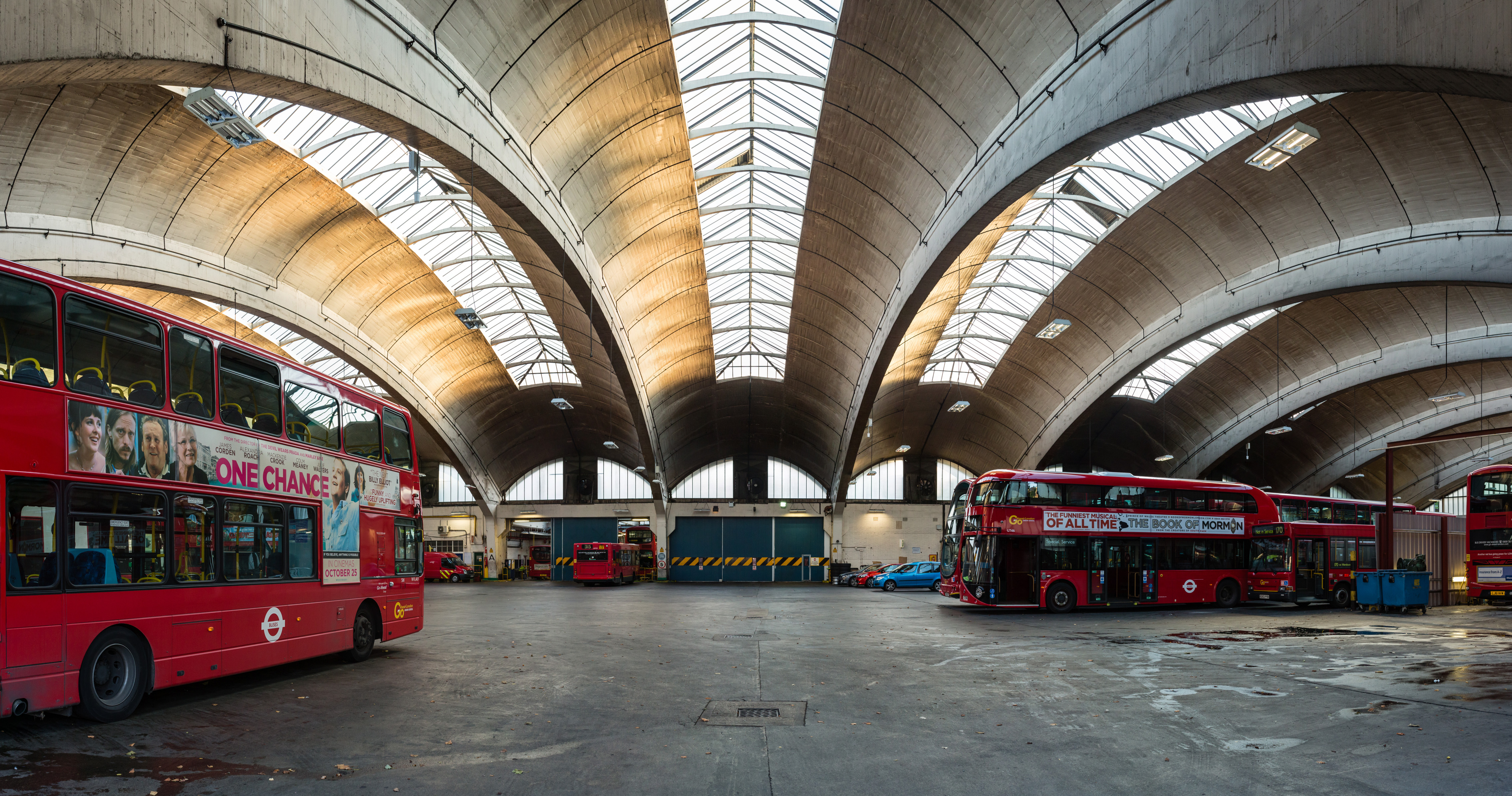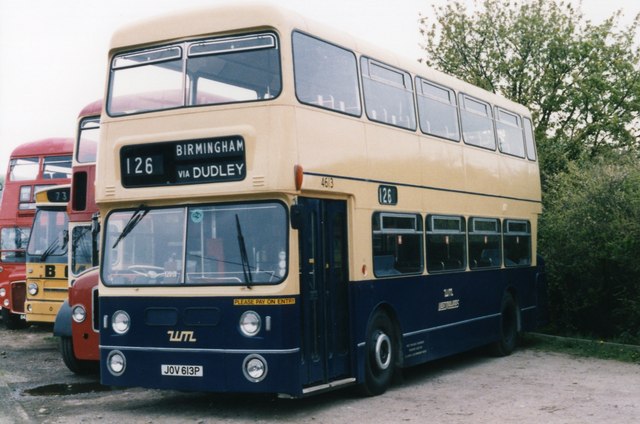|
London Buses Route 133
London Buses route 133 is a Transport for London contracted bus route in London, England, running between Streatham and Liverpool Street stations. History Route 133 commenced operating on 27 March 1929 from South Croydon to Liverpool Street station. On 24 July 1971, the route was withdrawn between Croydon and Streatham with one man operation introduced with Daimler Fleetlines. Upon being put out to tender, it was taken over by London General's Stockwell Garage on 6 January 1990 with Northern Counties bodied Volvo Citybuses. Upon being re-tendered, route 133 was taken over by Arriva London's Norwood garage on 22 January 2010. When next tendered, it was retained by Arriva London, with it transferred to Brixton garage on 21 January 2017. On 23 November 2022, it was announced that route 133 would be rerouted to run to Holborn instead of Liverpool Street, following a consultation that proposed that it would run to St Bartholomew's Hospital. This change will be implemented b ... [...More Info...] [...Related Items...] OR: [Wikipedia] [Google] [Baidu] |
Arriva London
Arriva London is a major bus company operating services in Greater London. It is a subsidiary of Arriva UK Bus and operates services under contract to Transport for London. It was formed in 1998 from a fusion of previously separate Arriva subsidiaries Grey-Green, Leaside Buses, Kentish Bus, London & Country and South London Transport. Operations are split between two registered companies, Arriva London North Limited and Arriva London South Limited. History The origins of Arriva London can be traced back to 1980 when the Cowie Group purchased the Grey-Green coach business in London.The Arriva London Story Arriva London In February 1987, Grey-Green commenced operating bus routes in north and east London under contract to |
South Croydon
South Croydon in south London is the area surrounding the valley south of central Croydon and running as far south as the former Red Deer public house on the Brighton Road. It is bounded by Waddon to the West and Selsdon and Sanderstead to the East. It is part of the South Croydon ( CR2) post town and in the London Borough of Croydon. The area was developed in the 19th century out of land lying in two ancient manors, Croham and Haling. The names of these can still be seen in the area today, and the locations of the manor houses can be found in the Croham Manor Road conservation area and in Whitgift School. Much of the land of South Croydon has been associated through the years with the Whitgift Foundation whose charitable work has benefited and influenced Croydon since its foundation in 1596. History The placename Croydon is recorded as early as 809 and is listed in the 1086 Domesday Book, where it is described as the land held in Demesne by Lanfranc, the Archbishop of Cante ... [...More Info...] [...Related Items...] OR: [Wikipedia] [Google] [Baidu] |
St Bartholomew's Hospital
St Bartholomew's Hospital, commonly known as Barts, is a teaching hospital located in the City of London. It was founded in 1123 and is currently run by Barts Health NHS Trust. History Early history Barts was founded in 1123 by Rahere (died 1144, and entombed in the nearby Priory Church of St Bartholomew the Great), a favourite courtier of King Henry I. The dissolution of the monasteries did not affect the running of Barts as a hospital, but left it in a precarious position by removing its income. It was refounded by King Henry VIII in December 1546, on the signing of an agreement granting the hospital to the Corporation of London.''St Bartholomew's Hospital'' ''Old and New London'': Volume 2 (1878), pp. 359–363. Retrieved 30 January 2009 The hospital became legally styled as the "House of the Poore ... [...More Info...] [...Related Items...] OR: [Wikipedia] [Google] [Baidu] |
Holborn Tube Station
Holborn ( ) is a London Underground station in Holborn, Central London, located at the junction of High Holborn and Kingsway. It is served by the Central and Piccadilly lines. On the Central line the station is between Tottenham Court Road and Chancery Lane stations; on the Piccadilly line it is between Covent Garden and Russell Square and is in Travelcard Zone 1. Close by are the British Museum, Lincoln's Inn Fields, Red Lion Square, Bloomsbury Square, London School of Economics and Sir John Soane's Museum. Located at the junction of two earlier tube railway schemes, the station was opened in 1906 by the Great Northern, Piccadilly and Brompton Railway (GNP&BR). The station entrances and below ground circulation were largely reconstructed for the introduction of escalators and the opening of Central line platforms in 1933, making the station the only interchange between the lines. Before 1994, Holborn was the northern terminus of the short and little-frequented Piccadilly ... [...More Info...] [...Related Items...] OR: [Wikipedia] [Google] [Baidu] |
Coach & Bus Week
''Coach & Bus Week'' (CBW) is the only paid-for weekly trade magazine for the road passenger transport industry in the United Kingdom. It is available by subscription, from main branches of WHSmith and from some independent newsagents. The magazine is based in Peterborough. History and profile ''Coach & Bus Week'' was established in 1978. The magazine had half its roots with the founding in Hull by former coach proprietor Terry Beanland of ''Coachmart''. Its most prolific journalist was Ray Pearson, who covered all technical aspects, including road tests and tourism topics. The weekly magazine was purchased by EMAP and moved to Peterborough Peterborough () is a cathedral city in Cambridgeshire, east of England. It is the largest part of the City of Peterborough unitary authority district (which covers a larger area than Peterborough itself). It was part of Northamptonshire until .... The publisher was EMAP Response (later renamed EMAP Automotive), which purchased Bus Busine ... [...More Info...] [...Related Items...] OR: [Wikipedia] [Google] [Baidu] |
Volvo B10M
The Volvo B10M was a mid-engined city bus and coach chassis manufactured by Volvo between 1978 and 2003. It succeeded the B58 and was equipped with the same 9.6-litre horizontally mounted Volvo diesel engine mounted under the floor behind the front axle. An articulated version under the model name Volvo B10MA was also offered, as was a semi-integral version known as the C10M, with the engine in the middle of the chassis. History Designed as a successor to the Volvo B58, a large portion of B10M chassis were built in Sweden, but some were built in other countries, like the United Kingdom and Brazil.Evolução do Produto - Ônibus Volvo Buses Brasil The B10M was one of the best-sellin ... [...More Info...] [...Related Items...] OR: [Wikipedia] [Google] [Baidu] |
Northern Counties Motor And Engineering Company
The Northern Counties Motor & Engineering Company was an English builder of bus and coach bodywork based in Wigan. History Northern Counties Motor & Engineering Company was founded in Wigan in 1919 by Henry Lewis. The Lewis family remained owners of the company until it was bought out over seventy years later. As was common at the time, early products were bodywork and repairs for private automobiles together with a tyre fitting service. By the early 1920s, the private automobile work had ceased and the manufacture of bodywork for service buses commenced. Bodywork was for both single and double deck vehicles. Very few coaches were produced. During World War II, Northern Counties was authorised by the government to produce bus bodies to a utility specification, mainly using steel-framed construction. Northern Counties established a loyal client base and reputation for quality construction in the post-war years. Notable clients included local operators SHMD Board, Mancheste ... [...More Info...] [...Related Items...] OR: [Wikipedia] [Google] [Baidu] |
Stockwell Garage
Stockwell Garage is a large bus garage in Stockwell, in the London Borough of Lambeth, which opened in April 1952. At the time of construction it was Europe's largest unsupported roof span. The garage provides of unobstructed parking space and could originally house 200 buses, required at a time when the last trams were being replaced by buses. On a cursory view of the exterior, the bus garage is typical of much of the architecture built in the post war reconstruction period in London around the Festival of Britain. There was a steel shortage at the time, so concrete was used for the roof structure instead of the steel girder structure that had previously been the norm. At Stockwell, the opportunity was taken to create a bravura piece of reinforced concrete design, building on a formerly residential site cleared by the Blitz. It is a few hundred metres to the northwest of Stockwell Underground station. The garage was designed by Adie, Button and Partners, with Thomas Bilbow, ... [...More Info...] [...Related Items...] OR: [Wikipedia] [Google] [Baidu] |
Pen & Sword
Pen and Sword Books, also stylised as Pen & Sword, is a British publisher which specialises in printing and distributing books in both hardback and softback on military history, militaria and other niche subjects; factual non-fiction, primarily focused on the United Kingdom (UK). Pen and Sword has over 6,000 titles available in print, and also available as ebook download. Releasing 500 new titles each year on a variety of subjects, it is part of the ''Barnsley Chronicle'' newspaper group. History The first books produced by the company were in response to public demand, following a series of articles first published weekly in the ''Barnsley Chronicle''. ''Dark Peak Aircraft Wrecks'' told the story of crash sites in the Dark Peak area of the Peak District National Park, and a further weekly feature on the history of two Kitchener battalions, known as the Barnsley Pals, aroused a public interest. Over the years these books have been reprinted a number of times. Following on ... [...More Info...] [...Related Items...] OR: [Wikipedia] [Google] [Baidu] |
Ian Allan Publishing
Ian Allan Publishing was an English publisher, established in 1942, which specialised in transport books. It was founded by Ian Allan. In 1942 Ian Allan, then working in the public relations department for the Southern Railway at Waterloo station, decided he could deal with many of the requests he received about rolling stock by collecting the information into a book. The result was his first book, ''ABC of Southern Locomotives''. This proved to be a success, contributing to the emergence of trainspotting as a popular hobby in the UK, and leading to the formation of the company.Ian Allan…the man who launched a million locospotters ''The Railway Magazine'' issue 1174 February 1999 pages 20-27 The company grew from a small producer of books for train enthusiasts and spotters to a large transport publisher. Each year it published books covering subjects such as military and civil aviation, naval and maritime topics, buses, trams, trolleybuses and steam railways, including hi ... [...More Info...] [...Related Items...] OR: [Wikipedia] [Google] [Baidu] |
Daimler Fleetline
The Daimler Fleetline (known as the Leyland Fleetline from circa 1975) is a rear-engined double-decker bus chassis which was built between 1960 and 1983. It was the second of three bus models to have a marque name as well as an alphanumeric identity code. The other two were the Freeline and the Roadliner. Design The Daimler Fleetline was the second rear-engined double-decker bus chassis to be launched by a UK manufacturer, following Leyland's introduction of the Atlantean in 1958. From the outset, the Fleetline had a drop-centre rear axle fitted as standard, enabling low-height bodywork to be fitted without necessitating an inconvenient seating layout in part of the upper deck, as was the case with early Atlanteans. Leyland responded by offering a drop-centre rear axle as an option on the Atlantean, but after the two companies came under the same ownership in 1968, the low-height Atlantean option was discontinued. The prototype Fleetline was fitted with a Daimler engi ... [...More Info...] [...Related Items...] OR: [Wikipedia] [Google] [Baidu] |






